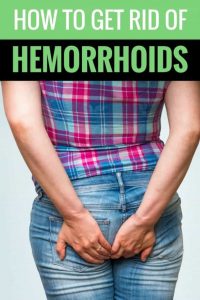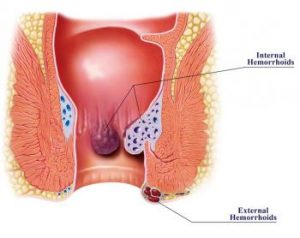Hemorrhoids – is disease, information about which can be found in the writings of ancient healers (Hippocrates, Avicenna). Millions of people in the world suffer from this disease. What is hemorrhoids – the term implies the presence of varicose veins of the rectum, which give against the background of inflammation – bleeding and pain. In the rectal part there is a large accumulation of venous vessels, which determines the frequency of their defeat by the pathogenic process. Many people are forced to the question – how to get rid of hemorrhoids.
The causes of this disease
The increased arterial influx, reduced outflow from the venous vessels leads to the accumulation of blood in the veins. As a result, they swell, their walls become thinner and hemorrhoids develop. They can become inflamed, they form blood clots. So the disease develops.

To it predispose:
- heredity;
- impaired bowel function, leading to constipation;
- long standing, or sitting position of the body;
- excessive physical exertion;
- pregnancy, heavy childbirth;
- inactive work, which does not require physical activity;
- improper diet;
- infectious diseases;
- taking alcohol, especially in large doses.
Complaints and manifestations of hemorrhoids
The picture of the disease develops according to a certain pattern.
The patient consistently appears:
- Feelings of discomfort, tingling, itching, heaviness in the anus.
- Periodic anal bleeding (due to the proximity of small arteries). The blood is noted on the feces, or immediately after act. Sometimes in the form of a drop, or trickle, often with mucus. Bleeding can be significant, then in the blood test there is anemia.
- Pain. The appearance of this sign is an indicator of the inflammatory process, the infringement of the hemorrhoidal node, the appearance of an anal fissure. Pain is worse with defecation, especially with constipation.
- Skin irritation around the anus.
Wave-like exacerbations against a background of calm are repeated with different frequency and duration.
What are kinds of hemorrhoids?
The intensity is acute and chronic hemorrhoidal process. In this case, we are talking about two phases of one disease. On a background of a chronic current there are exacerbations.
By appearance we can distinguish such types:
- Internal hemorrhoids. Only the physician can find out the nodes under the rectal mucosa under diagnostic examination. The area of their location corresponds to the dentate line. This is the place in which there is an internal venous plexus.
- External hemorrhoids (external). In this case, the swollen nodes are localized under the skin, below the dentate line.
- Combined. Combines both options.

According to the clinical course, there are such stages as:
- odulation is limited by protrusions into the lumen of the intestine, but without prolapse. Bleeding is possible when injuring during severe constipation.
- There is a loss of “cones” during the act of defecation, which then leave on their own (they are reset).
- Appearance of nodes comes at any kinds of loadings, at straining effort. Repositioning them is possible only by hand.
- Dropped nodes are determined by visual inspection, their directing beyond the sphincter of the anus is impossible.
How to identify the hemorrhoids in a patient
Diagnosis is not complicated. The presence of hemorrhoids can be established on the basis of a survey and after a person’s examination.
The proctologist appoints:
- Finger rectal diagnostics. In the knee-elbow position with the help of a finger, the condition of the rectum is study;
- Anoscopy – visual examination of the rectum ampoule;
- sigmoidoscopy – the introduction of a special tube with LED to a depth of up to 35 look The most diagnostic procedure.
- Irrigoscopy is a radiopaque method that provides information about the entire large intestine.
- Colonoscopy. It is indicated if necessary to complete a study of the colon
In addition to instrumental diagnostics, a blood test is provided.
How to treat hemorrhoids
In the initial phases of the disease, one can do without observing a special regime.
It includes:
- Diet. It is necessary to refuse fried, smoked, acute food composition. Alcohol is best not to drink at all, or to minimize. It is necessary to limit salt. To regulate the stool and prevent constipation in food, foods containing coarse fibers and fiber should predominate. Raw fruits and vegetables are useful. Benefits are the reception of a variety of cereals as side dishes.
- In the phase of end of process physical therapy is required, running, walking, swimming are useful. Caution is needed when riding a bicycle.
- A good effect gives a cold ascending shower to the anal area, the total hardening.
Conservative treatment of hemorrhoids
If, on examination, the doctor does not find it necessary to make surgical treatment, he can prescribe pills, ointments and suppositories.
The action of drugs is based on:
- strengthening of the vein wall;
- stimulation of blood circulation in blood vessels;
- acceleration of outflow of lymph.
Suppositories and ointments relieve inflammation, help reduce pain, restore mucosal tissues and facilitate the act of defecation.
Surgical treatment of hemorrhoids
It is used as a radical method in case of neglected stages, or with obvious progress of the disease.
The proctologist, evaluating the patient’s condition and stage, most often chooses minimally invasive surgery:
- Infrared photocoagulation. The hemorrhoidal node is eliminated by a beam of thermal energy.
- Sclerotherapy. In the site, injections are injected drugs that cause the gluing of the affected vessel.
- Ligation. At the base of the hemorrhoids, a ring is inserted, which prevents blood entering from entering the node. After a while it, together with the ring, separates.
- Desarterization. This method is based on the ligation of arterial vessels, which are the source of blood flow into the hemorrhoid veins.
Classical surgical interventions
With inefficiency of conservative and minimally invasive surgery, in advanced stages, surgical excision of hemorrhoidal veins is provided.
For this use the following methods:
- closed;
- open.
- Longo’s method (apparatus circular excision of the node from the intestinal mucosa).
Complications that hemorrhoids can give
This disease can cause the following problems:
- anemia (due to persistent bleeding);
- inflammatory processes with spreading to the cellulose – paraproctitis;
- anal fissures;
- sphincter insufficiency with incontinence of gases and feces. The complication is typical for the elderly.
To avoid problems, it is necessary to make examination in time at the first manifestations of the described disease.
